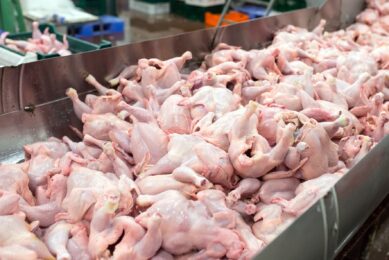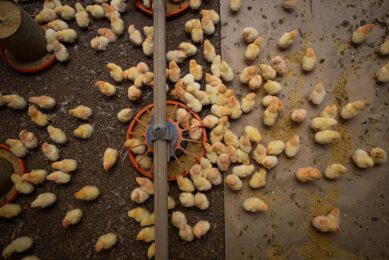Drinker line pressure settings simplified for drier litter
One of the leading reasons for wet litter in poultry houses is incorrect pressure settings. Keeping the litter dry in a friable state is necessary for achieving top rated production.
Misunderstandings about the causes of wet litter and lack of clear direction on the best way to manage litter conditions, make it difficult to achieve optimum results. Making management of litter conditions easy and understandable is a big step in improving performance.
To this end, Ziggity Systems has developed a set of protocols to help producers achieve maximum litter performance under the drinker lines.
By using these protocols, producers can avoid the ammonia releases caused by wet litter, as well as a host of other diseases including coccidiosis that can hurt production. Also footpad dermatitis can be reduced. Firstly, this benefits the welfare of the birds. Moreover it makes chicken feet suitable for export to countries like China.
During the drinking process, birds can only retain a certain amount of water in their beaks. If more water discharges from the drinker than what the bird can retain, the oversupply spills onto the litter. The key to achieving the correct pressure settings for the drinking system is to take litter readings.
For the first week of a chick’s life, the water pressure must be at an absolute minimum. Ziggity recommends settings as low as 1 inch (2.5 cm) of column height pressure.If after the first week, the litter under the drinkers is too wet, the pressure must be kept at the absolute minimum until the litter becomes dry under the lines.
Starting on day eight if the litter is dry, select one drinker line, preferably the one that is the most difficult to keep dry. Adjust the column pressure 1 inch (2.5 cm) higher in this test line. Do not adjust the other lines. Wait for about 24 hours and examine the litter immediately under the drinkers. If the litter is still dry, adjust the column pressure in the other drinker lines up by 1 inch (2.5 cm). Repeat this process until a slight dampness develops under the test line.
If for any reason, litter becomes wet under the drinker lines, immediately reduce column pressure by 50 percent. Wait for the litter to crust over dry and then repeat the above procedure.
By following this simple procedure, producers can assure that they are achieving optimal litter conditions. This will result in better flock performance and better profits. Management tips are available at
www.ziggity.com.
Join 31,000+ subscribers
Subscribe to our newsletter to stay updated about all the need-to-know content in the poultry sector, three times a week.













